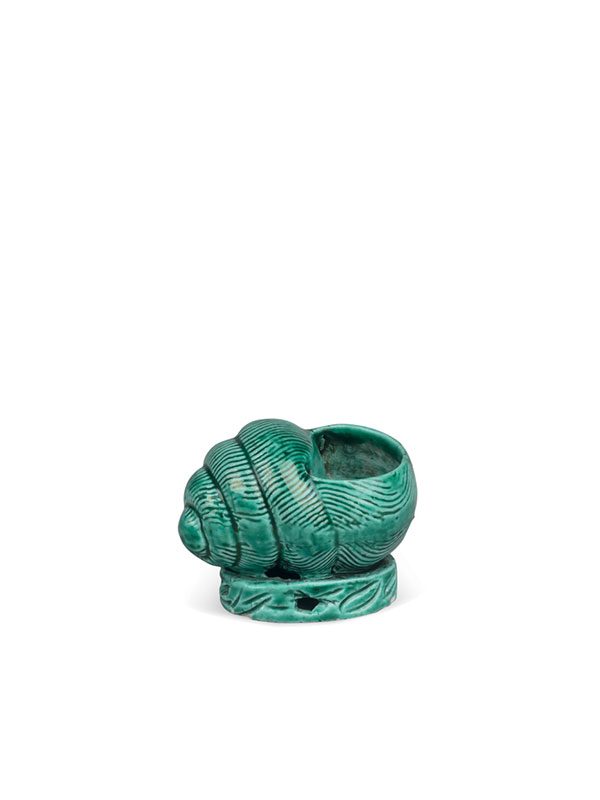Porcelain water pot in the form of a conch shell
A water pot in the shape of a conch shell, supported on an openwork oval base ring. The realistically moulded conch shell is incised with parallel lines all around its spiral end and the ovoid body, which has been adapted to become a water container. The piece including its base is covered in a bright green glaze, leaving only the rim of the base unglazed and showing the fine white porcelain body. Some traces of ink stain are visible in the interior of the body, revealing its function as a water pot.
This vividly moulded porcelain water pot is a fine example of ‘vessels imitating living beings’ (fangshenqi), which were produced from the Song dynasty (960 – 1227) onwards. This type of porcelain vessel that was hand sculpted for achieving a high degree of realism, aims to imitate the form, proportions, size and texture of a real-life being, such as plants, animals, creatures or objects. A porcelain water dropper in the form of a lotus seedpod with a plain sancai (susancai) glaze, dated to the Kangxi period (1662 – 1722), is in the collection of the Asian Art Museum in San Francisco.[1] A comparable porcelain water vessel of conch shell form and covered in a grey crackled glaze, possible after a Ge yao type glaze, is in the collection of the British Museum.[2]
Provenance: Private collection, the Netherlands
- Li, He Chinese Ceramics, The New Standard Guide, The Asian Art Museum of San Francisco, Thames and Hudson, London 1996, no. 617, pp. 296-7
- The British Museum online collection archive, registration number: Franks.240.+

